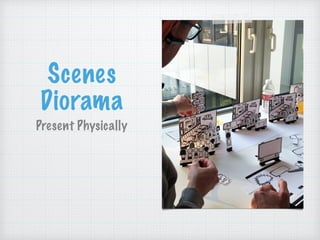The document discusses an experiment conducted by the author to test bees' ability to learn and communicate about new food sources. The author covered some flowers with leaves to hide them from bees, finding the bees quickly rediscovered the hidden flowers once a few bees found them. Fake composite flowers were initially visited but then avoided once smelled. Bees also learned to identify simple paper flowers with honey on them, and would return to those flowers rather than natural ones. The experiment showed bees can communicate new food sources to others through imitation.



































